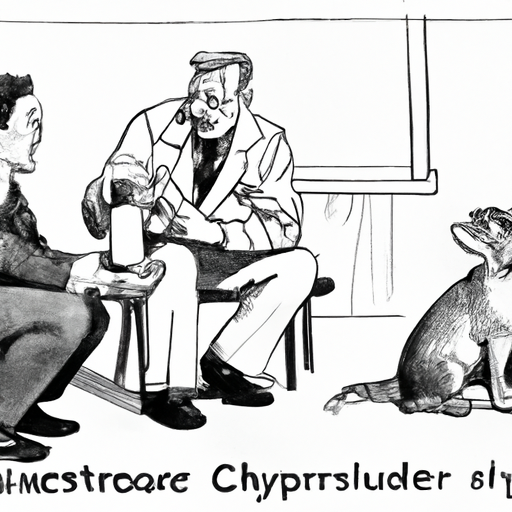In your journey as a dog owner, you might have come across the term Cyclosporine. This drug, originally designed for human use, has found its way into veterinary medicine and has proven to be a vital component in managing various dog health conditions.
Table of Contents
- Understanding Cyclosporine
- Uses of Cyclosporine in Dogs
- Side Effects of Cyclosporine
- Dosage and Administration
- Frequently Asked Questions
Key Takeaways:
- Cyclosporine is an immunosuppressant drug used in dogs to treat various conditions such as atopic dermatitis and keratoconjunctivitis sicca (dry eye).
- While effective, cyclosporine can have side effects that dog owners should monitor.
- The dosage of cyclosporine should be carefully administered under the guidance of a veterinarian.
Understanding Cyclosporine
Cyclosporine is an immunosuppressant drug. This means that it suppresses the immune system’s response. It was initially used in humans, particularly for patients who had undergone organ transplants. Cyclosporine prevents the body’s immune system from rejecting the new organ.
In dogs, cyclosporine is primarily used to treat autoimmune diseases and allergies. Autoimmune diseases are conditions where the body’s immune system mistakenly attacks its own cells. Allergies, on the other hand, are the body’s overreaction to certain substances.
Uses of Cyclosporine in Dogs
Cyclosporine has several uses in veterinary medicine, especially in managing conditions such as:
-
Atopic Dermatitis: This is a chronic skin disease associated with allergies. The drug helps reduce itching and inflammation caused by the condition.
-
Keratoconjunctivitis Sicca (KCS or Dry Eye): Cyclosporine aids in the increase of tear production in dogs suffering from KCS, thereby alleviating discomfort and preventing damage to the cornea.
-
Immune-Mediated Diseases: Cyclosporine can be used to manage immune-mediated diseases such as Immune-Mediated Hemolytic Anemia (IMHA) and certain types of arthritis.
-
Perianal Fistulas: These are painful, tunnel-like lesions around the anal area of the dog. Cyclosporine helps in reducing the inflammation and promotes healing.
For more information on these conditions, you can visit this comprehensive guide on common diseases in dogs.
Side Effects of Cyclosporine
Like any other drug, cyclosporine has potential side effects. These include:
- Vomiting
- Diarrhea
- Lack of appetite
- Weight loss
- Lethargy
- Development of urinary tract or gum infections due to immune suppression
If your dog experiences any of these side effects while on cyclosporine, it’s crucial to consult your vet immediately.
Dosage and Administration
The dosage of cyclosporine varies depending on the dog’s weight and the condition being treated. As a result, it’s vital to administer this drug under the guidance of a veterinarian.
Also, note that cyclosporine should be given on an empty stomach, usually an hour or two before meals. This is because the presence of food in the stomach can affect the drug’s absorption.
For more guidance on administering medication to your dog, check out this helpful article on One Top Dog.
Frequently Asked Questions
1. Can cyclosporine cure my dog’s condition permanently?
While cyclosporine can effectively manage symptoms, it does not provide a permanent cure. Conditions like atopic dermatitis and KCS are chronic and require long-term management.
2. Can I stop giving cyclosporine to my dog if I see improvements?
No, you should not stop administering cyclosporine without consulting your vet. Sudden withdrawal can lead to a relapse of symptoms.
3. Can I use human cyclosporine for my dog?
While the drug is the same, the dosage might differ. Always consult your vet before giving any medication to your dog.
In conclusion, cyclosporine is a powerful drug that can significantly improve the quality of life for dogs suffering from certain conditions. However, its use should always be under the supervision of a vet. For more information on dog health, you can browse through other useful articles on One Top Dog.
Remember, being informed is one of the greatest gifts you can give to your furry friend. Check out this dog care guide to further equip yourself with the knowledge to provide the best care for your canine companion.



